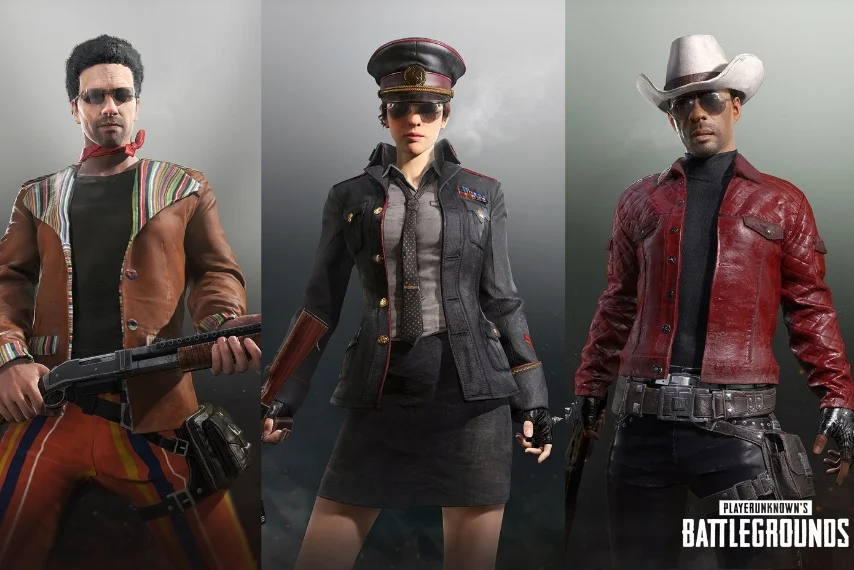Bluehole Wants To 'Maintain The Value' Of PUBG's Marketable Cosmetics
Now that the launch build of PlayerUnknown’s Battlegrounds is slated for early November, many wonder what Bluehole and PUBG Corporation’s ongoing game support will look like. It’ll likely be several months before we have the complete picture; however, PUBG Corp. CEO Chang Han Kim offered some details on the role cosmetic items will play when we spoke at PAX West.
Loot crates have been a sensitive subject of late, following controversial implementations in Middle-earth: Shadow of War and the Star Wars Battlefront II beta. Fan concerns led to calls for stricter regulation, the publication of drop rates and evenESRB warnings. PlayerUnknown’s Battlegrounds launched with a crate system when it came to Early Access in March 2017, but you couldn’t buy them directly from the studio. Players spent Battle Points, an in-game currency, on crates that would double in price (starting at 700 BP) after each purchase. You could only buy six crates per week and jackets, among the rarest drops, were stripped of inventory space over pay-to-win concerns.
That changed in the weeks ahead of Gamescom back in August, when Bluehole would host its first PUBG tournament. Now there are two ways to unlock cosmetics inPlayerUnknown’s Battlegrounds. Players can spend Battle Points on Survivor or Wanderer crates, each tied to it’s own loot table with unique top-tier drops. You’re still allowed six per week and the price still doubles after each purchase. Crates can be sold (unopened) on the Steam Marketplace, or you can take your chances opening them up. Premium crates like the gamescom box start at 1200 BP. The price doubling and weekly limits still apply AND gamescom crates required a key, sold for $2.50, to open. But Marketplace profits can also be spent on keys sold by other Steam users.
The expansion of PUBG ’s crate system wasn’t as controversial as it has been elsewhere, but confusion about the implementation did lead to an apology from the game’s creative director, Brendan Greene. But paid cosmetics aren’t going away. Greene also defended Bluehole’s test run, explaining that testing drop rates is necessary to ensure the system is fair post-launch.
“I do understand your concerns about the system, but I feel testing for a sturdy economy on the Steam Marketplace is necessary at this stage and ultimately beneficial for the game,” Greene wrote in August. “And once again, this is a purely optional system, and you are not forced into participating if you do not feel like it. You will still get a fully featured game, with a polished battle royale game-mode, a wide variety of weapons and vehicles to play with, stat tracking, ranking and leaderboard systems, 2D and 3D replays and much more.”
We’ve only seen one premium crate so far, with new items inspired by Battle Royale, sold to fund the prize pool for PUBG’s Gamescom Invitational. But players made their feelings quite obvious. Despite the complaints of a vocal minority, PUBG’s microtransactions were incredibly popular. Digital skirts sold for almost $500 after the gamescom crates debuted. And they still sell in the $150-$400 range, depending on rarity. That long-term value is what Bluehole is aiming for, regardless of whether you spend cash on crates or earn them playing PUBG.
“We want to create a model that makes both groups happy,” Kim told Player.One. “People go out there and buy virtual cosmetic items. But if the value of them, or their prices, go down afterwards, it could make people feel like they wasted money. We wanted to see if that wouldn’t happen. If we can maintain the value of their items.
“If you buy a shirt in real life, and it’s a very high-value shirt, you can wear it for like a week. But then you can sell it on the second-hand market at a similar price. There’s no minus for you. We wanted to build something where we can see that healthy cycle, going over and over again, to satisfy both groups of players.”
Creating and maintaining such an economy, particularly in the wake of the game’s explosive growth, requires real-world testing. Kim says Bluehole’s analytics team is still poring over all the data collected after the gamescom crates and keys hit PUBG. But the publisher wasn’t entirely shocked by its success, given how popular virtual cosmetics are in other regions.
“Korea was probably the first country that has ever done it. It’s been happening for 20-plus years,” Kim said.
Long before Western gamers were debating the merits of horse armor or lamenting the demise of cheat codes, Korean internet users were buying virtual cosmetics for everything from chat services to MMOs and mobile games.
“When that model first came out, everyone was so surprised to see so many people are willing to spend so much money dressing up their online avatars,” Kim acknowledged. “But now it’s not that much of a surprise for us because we know people like that.”
Kim says Bluehole and PUBG Corp. want to avoid pandering to a specific region, now that the team has paid tribute to the movie that birthed the genre, which rules out other easy sources of inspiration, like The Hunger Games. Previews for the upcoming desert map confirmed we’ll find lucha libre masks in the new environment, which draws inspiration from Mexico. Making gear that fits the virtual locations where PUBG’s deathmatches unfold sounds like a more reasonable target than trying to incorporate all the real-world locations people are playing the game.

